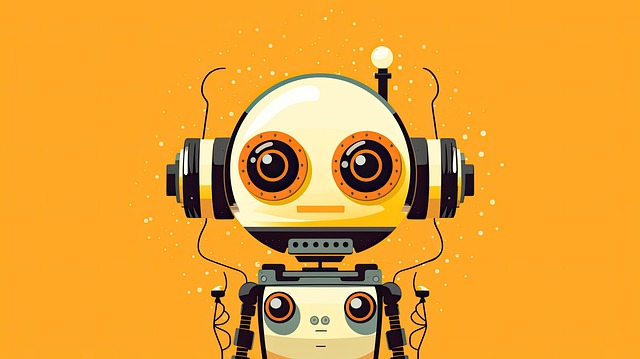Chatbots are revolutionizing industries by offering personalized, seamless experiences through natural language processing (NLP), instant responses, and machine learning. They handle inquiries, automate tasks, and provide 24/7 support, leading to efficient operations, cost savings, and enhanced customer satisfaction. Advanced algorithms enable chatbots to analyze data, adapt, and deliver contextually relevant conversations. Best practices for building effective chatbots include understanding user needs, leveraging NLP and AI algorithms for personalization, designing versatile and adaptable interfaces, regularly updating and learning from user interactions, and implementing feedback mechanisms in a rapidly evolving digital landscape.
In today’s digital landscape, chatbots have emerged as indispensable tools, transforming customer interactions and streamlining business processes. This comprehensive guide delves into the power of chatbots, highlighting their key features and benefits. We explore top-rated chatbots, uncovering best practices for building effective conversational AI. Whether you’re a startup or enterprise, mastering chatbots can revolutionize your operations and enhance user experiences. Get ready to unlock the potential of this game-changing technology – the future of customer engagement is here.
- Understanding the Power of Chatbots: A Comprehensive Guide
- Key Features and Benefits of Top-Rated Chatbots
- Unlocking Success: Best Practices for Building Effective Chatbots
Understanding the Power of Chatbots: A Comprehensive Guide

Chatbots are transforming the way we interact with technology, offering a seamless and personalized user experience across various sectors. Understanding their power involves recognizing their ability to process natural language, deliver instant responses, and learn from user interactions—all while ensuring efficient operations and cost savings. These intelligent assistants can handle customer inquiries, automate tasks, provide 24/7 support, and offer tailored recommendations, making them an indispensable tool for modern businesses.
The comprehensive guide to chatbots delves into their capabilities, highlighting how they use advanced algorithms and machine learning to comprehend user needs. By analyzing vast amounts of data, chatbots can evolve, adapt, and deliver contextually relevant conversations, fostering stronger connections between brands and customers. This evolution has led to the development of sophisticated chatbot applications in healthcare, finance, retail, and more, revolutionizing service delivery and enhancing customer satisfaction.
Key Features and Benefits of Top-Rated Chatbots

Top-rated chatbots boast several key features that set them apart. First and foremost, they offer 24/7 availability, allowing users to get instant assistance at any time. Advanced natural language processing (NLP) enables these bots to understand user queries accurately, providing relevant and contextually appropriate responses. Personalization is another significant advantage; top chatbots can tailor their interactions based on individual user preferences and behaviors, enhancing the overall user experience.
Moreover, integration with various systems and platforms lets them perform multiple tasks, from scheduling appointments to handling customer support inquiries seamlessly. Their ability to learn and improve over time through machine learning algorithms ensures they become more efficient and effective. This continuous evolution means users can expect increasingly sophisticated interactions, making chatbot technology a game-changer in many industries.
Unlocking Success: Best Practices for Building Effective Chatbots

Unlocking Success: Best Practices for Building Effective Chatbots
The key to building a successful chatbot lies in understanding user needs and preferences. Engaging and effective chatbots prioritize natural language processing (NLP) capabilities, enabling them to comprehend diverse user queries and deliver relevant responses. By integrating advanced AI algorithms, developers can foster more meaningful interactions, ensuring the chatbot provides accurate and contextually appropriate answers. Personalization is another powerful tool; tailoring chatbot experiences based on user behaviors and preferences enhances user satisfaction and fosters long-term engagement.
Additionally, a successful chatbot design should focus on versatility and adaptability. It must be capable of handling various tasks, from simple Q&A sessions to complex problem-solving scenarios. Regular updates and learning from user interactions are vital to improve the chatbot’s performance over time. Effective feedback mechanisms also play a crucial role, allowing developers to refine the chatbot based on user feedback, ensuring it remains relevant and useful in a rapidly evolving digital landscape.
Chatbots have revolutionized customer interactions, offering unprecedented efficiency and versatility. By understanding their power and implementing best practices, businesses can harness their potential to enhance user experiences, streamline operations, and achieve significant growth in today’s competitive market. The key lies in integrating chatbots strategically, leveraging their capabilities to provide personalized, instant support, and continuously refining these tools based on user feedback and evolving trends.
